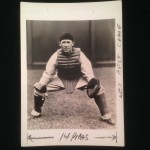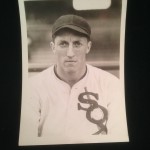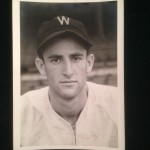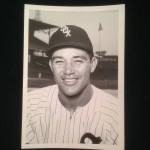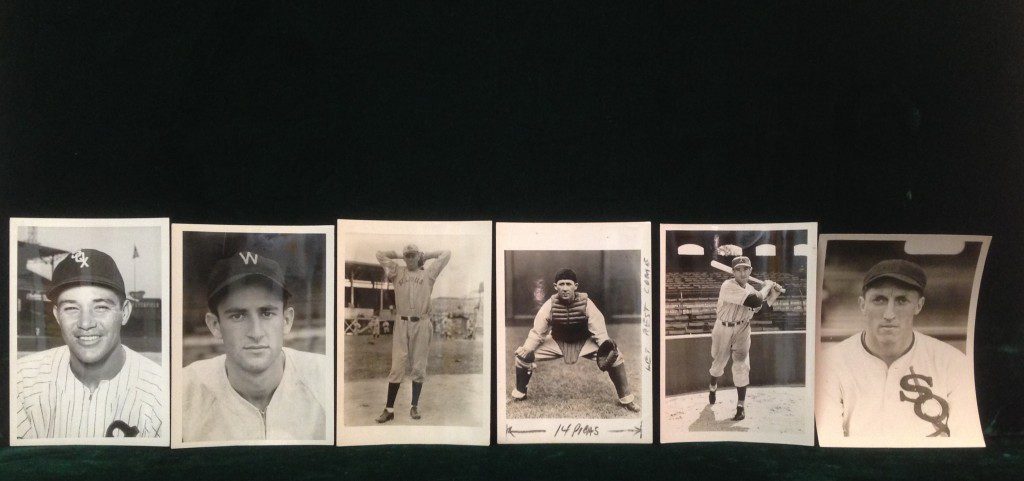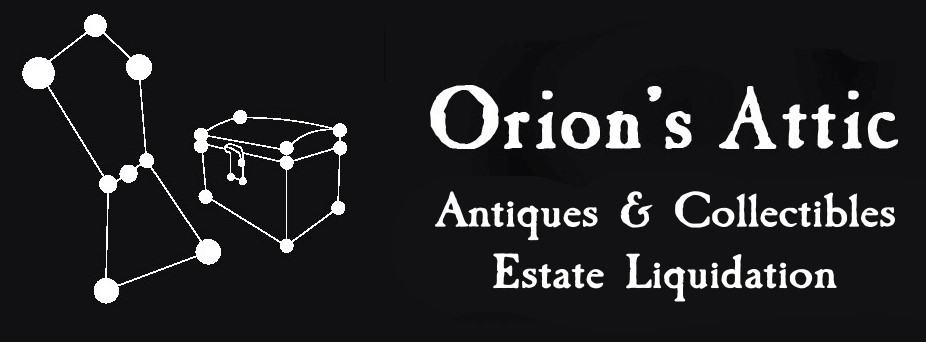I can’t help but get a little nostalgic every time I run into baseball memorabilia from yesteryear. I’m transported back to Atlanta Fulton-County Stadium, where I watched baseball’s real home run king, Hank Aaron, swat balls out of the park. I was six years old then. I sat breathless in the same stadium at age nine when Atlanta Braves’ reliever Gene Garber struck out Pete Rose and stopped his consecutive games hitting streak at 44.
The six old five-inch by seven-inch black and white photographs of baseball players from the 1930s and 1940s we just turned up is what punched my ticket to my latest stroll down memory lane. I stumbled across them in a random box of old photographs we bought from a woman who inherited the stuff. The American League Service Bureau produced the photos for newspapers including one in Chicago that used these. See all of the baseball memorabilia photos along with more details about them in the Sports Memorabilia section of our eBay store. I couldn’t help but hear the voice of James Earl Jones in my head. I was 20 when I sat spell-bound in a theater listening to his character, Terrence Mann, wax poetic about the place of baseball in America’s history in “Field of Dreams”.
“The one constant through all the years, Ray, has been baseball. America has rolled by like an army of steamrollers. It’s been erased like a blackboard, rebuilt, and erased again. But baseball has marked the time. This field, this game, is a part of our past, Ray. It reminds us of all that once was good, and it could be again. Ohhhhhhhh, people will come, Ray. People will most definitely come.”
I spent hours pouring over the faces of Robert Fenner, Marvin Ferrell, George Tebbetts, Peter Suder, James Barton Vernon and a Chicago White Sox player I haven’t yet been able to identify. I’ve been able to learn a lot about a few of these young men but able to stitch together only a bit about the others.
My journey through baseball history took me to accounts of players even doing the unthinkable – like helping an umpire in need so that he didn’t lose his job during The Great Depression. Detroit Tigers’ catcher George Tebbetts recognized that plate umpire Red Ormsby was suddenly experiencing dizzy spells during a game in 1934, according to November 2006 Military History magazine article by C. Brian Kelly that I found referenced in blog post by Michael Anthony Turpin. Ormsby couldn’t see well enough to call balls and strikes and feared that taking himself out of the game would cause him to lose his job and render him unable to feed his large family. Tebbetts and opposing catcher Mike Tresh of the Chicago White Sox gave Ormsby secret signals for balls and strikes so that he could make the calls for several innings until he recovered.
I felt badly for the young men who were never able to step over the chalk on to a Major League field – guys who toiled for years in the minors but due to one flaw or another in their respective abilities just couldn’t make it. Catcher
Robert Walter “Bob” Fenner didn’t make it to the bigs because of a poor arm. Instead, he played much of his career for the St. Paul Saints in Minnesota. The club kept him around because he could hit the ball across the Twin Cities. He did manage to make the Chicago White Sox spring training team in 1935 but it appears he went right back to St. Paul after that. [Update, a Chicago White Sox historian contacted us to let us know the person identified on the back of the Fenner photo isn’t Fenner but is John Rigney. Rigney was one of the Chicago White Sox top pitchers in the years prior to World War II. His most productive season came in 1939, when he won a career-high 15 games, including the first win for a pitcher during the first night game ever played at Comiskey Park (August 14). In 1940, he recorded 14 wins with a career-high 3.11 ERA, pitching an 11-inning, 1–0 shutout against the visitors New York Yankees (June 20). It was the first time since 1919 that the Yankees had been shut out in extra innings by one pitcher. After that, he won 13 games in 1941 and was 3–3 before joining the United States Navy in May 1942. After being discharged in 1945, he returned to Chicago, but his playing time was limited by arm injuries. He retired after the 1947 season. Rigney married Dorothy Comiskey, granddaughter of Charles Comiskey, founding owner of the White Sox, and daughter of J. Louis Comiskey, another former club president.]
Marvin Ferrell didn’t make it, either. Originally signed by the Major League club St. Louis Browns, he promptly got traded to Milwaukee. The Milwaukee Sentinel greeted the move with fanfare on March 15, 1931. The newspaper reported that Brewers had signed the “youthful right handed pitching sensation of the St. Louis Browns. Marvin is the 20 year old kid brother of the brilliant Cleveland slab artist, Wesley Ferrell, and the future great, Rick Ferrell, the regular Brown catcher.” The paper boasted that Ferrell in the years ahead “should be sold for a hefty price.” The high expectations never panned out. Ferrell apparently didn’t pitch an inning in the Major Leagues. [link
My heart also went out to players like Peter “Pecky” Suder, a utility infielder for the Philadelphia/Kansas City Athletics (1941–43 and 1946–55). He braved served the United States Army during World War II in the European Theater of Operations. Sadly, some people remember him for leading the American Leauge in grounding into double plays (23) in 1941. He was also the Athletics’ all-time leader in grounding into double plays (158).
James Barton Vernon did make it to the show – and he made it big. He played first base for the Washington Senators from 1939 to 1948 and 1950 to 1955. He also served stints with the Cleveland Indians, Boston Red Sox, Milwaukee Braves and Pittsburg Pirates. He also served the U.S. armed forces during World War II but still earned a number of Major League records. He also led the American League in fielding percentage four times, and the majors twice.
In August 2008, he was named as one of the ten former players who began their careers before 1943 to be considered by the Veterans Committee for induction into the National Baseball Hall of Fame in 2009.
There is even a sports museum dedicated to him: The Mickey Vernon Sports Museum at the Granite Run Mall in Media, Pennsylvania, honors Vernon’s career and military service – though it appears to be looking for a new home at the moment.
The last man on deck in our little collection is a player for the Chicago White
Sox that we haven’t yet been able to identify. I hoped we had caught a glimpse of Moonlight Graham but the photo is several decades too late and Graham’s single inning of play in right field came with the New York Giants and not the White Sox. Let us know if you know the identity of the mystery player. Maybe he has a fascinating story, too.
[Update: Thanks to a kind eBay shopper, we have learned the identity of this player. He is shortstop Alfonso “Chico” Carrasquel. He was a shortstop for White Sox before the arrival of Luis Aparicio. He was preceded by Luke Appling, so this was a great era for White Sox shortstops.]
Are you looking to sell a sports memorabilia collection? Orion’s Attic is always looking to buy more sports memorabilia. We’re always on the hunt for all kinds of antiques, collectibles, jewelry and more, too. We also provide estate sale services in Maryland, Washington D.C. and Northern Virginia. Contact us today to learn more about how we can help you with your treasures.

